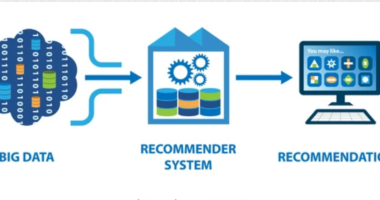In today’s fast-paced digital world, traditional marketing often struggles to keep up with the rapid demands of startups. Enter growth hacking—a mindset, strategy, and toolkit designed to achieve rapid, scalable growth with limited resources.
But what exactly is growth hacking? And how can businesses use it to their advantage?
What is Growth Hacking?
Coined by Sean Ellis in 2010, the term “growth hacking” refers to unconventional, low-cost, and creative strategies to acquire and retain customers. Growth hacking is especially popular among startups and tech companies that need to grow quickly without spending heavily on traditional advertising.
At its core, a growth hacker is a marketer who thinks like a coder—using data, testing, and iteration to find the most efficient path to growth.
Growth Hacking vs. Traditional Marketing
While traditional marketing often focuses on brand awareness, PR, and long-term strategy, growth hacking is laser-focused on growth metrics—things like user acquisition, activation, retention, referral, and revenue (known as the AARRR framework).
Here’s a quick comparison:
| Traditional Marketing | Growth Hacking |
|---|---|
| Big budgets | Lean spending |
| Long-term branding | Short-term results |
| TV, radio, print | Viral loops, SEO, product features |
| Campaigns | Experiments |
Growth hacking thrives on experimentation. The idea is to test dozens of ideas quickly, scale the ones that work, and discard the rest.
Key Components of Growth Hacking
- Product-Market Fit
Before growth hacking can begin, your product must solve a real problem for a defined audience. Without this, no growth hack will stick. - Analytics & Data
Growth hackers rely heavily on metrics. Tools like Google Analytics, Mixpanel, or Amplitude help track user behavior and optimize funnels. - Creative Experimentation
Growth hackers brainstorm unusual, clever, and cost-effective tactics. Think of Dropbox offering free space for referrals or Airbnb leveraging Craigslist to reach users. - Automation
Whether it’s onboarding emails, chatbots, or lead scraping, growth hackers love to automate for scale. - Virality & Referrals
Many of the best growth hacks include a viral loop—where users bring in more users, like Hotmail’s famous email signature: “Get your free email at Hotmail.”
Famous Growth Hacking Examples
- Dropbox: Grew 3900% in 15 months by incentivizing referrals with extra storage.
- Airbnb: Gained early traction by cross-posting listings to Craigslist.
- PayPal: Paid users $10 to join and $10 more to refer a friend.
- LinkedIn: Allowed users to create public profiles, improving SEO and visibility.
How to Get Started with Growth Hacking
- Set Clear Goals – What metric do you want to grow? Users? Signups? Retention?
- Form Hypotheses – What changes might move that metric?
- Run Experiments – Launch, test, and iterate quickly.
- Analyze & Scale – Double down on what works, kill what doesn’t.
Is Growth Hacking Right for You?
Growth hacking isn’t just for startups anymore. Even established companies are adopting this agile, data-driven approach to outmaneuver competitors and delight customers.
But remember, growth hacking is not a magic bullet. It requires a deep understanding of your users, relentless experimentation, and the willingness to fail fast and often.
Conclusion
Growth hacking represents a shift in how businesses think about marketing and growth. It blurs the lines between product, marketing, and engineering—and rewards creativity, speed, and agility.
Whether you’re building the next unicorn or optimizing a side project, embracing the growth hacker mindset could be the edge you need.










